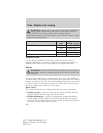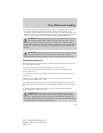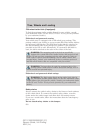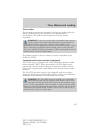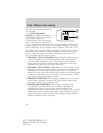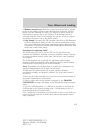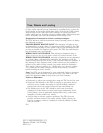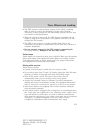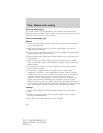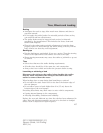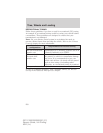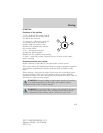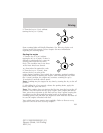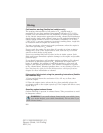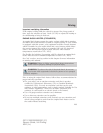
Servicing after towing
If you tow a trailer for long distances, your vehicle will require more
frequent service intervals. Refer to Special operating conditions in the
Scheduled Maintenance Guide chapter.
Trailer towing safety tips
General
• Ensure that the trailer, safety chains and 7–pin electrical connectors
are securely fastened.
• Make sure the truck receiver, draw bar, and coupler are properly
connected and adjusted.
• Check rear view and side mirrors for proper visibility especially when
towing trailer wider than the truck.
• When turning make wide turns to allow trailer tires to properly clear
any obstacles.
• When towing, operate the vehicle at lower speeds than you would
when not towing a trailer. The likelihood of trailer sway is greater at
higher speeds.
• Be prepared for trailer sway due to buffeting when larger vehicles
pass in either direction.
• If you will be towing a trailer frequently in hot weather, hilly
conditions, at GCWR, or any combination of these factors, consider
refilling your rear axle with synthetic gear lubricant if not already so
equipped. Refer to Maintenance product specifications and
capacities in the Maintenance and Specifications chapter for the
proper axle lubricant. Remember that regardless of the rear axle
lubricant used, do not tow a trailer for the first 500 miles (800 km) of
a new vehicle, and that the first 500 miles (800 km) of towing be done
at no faster than 70 mph (113 km/h) with no full-throttle starts.
Loading
• Trailer loads should be evenly distributed front to back and left to
right.
• Never exceed truck, trailer, receiver, ball, tongue, tire or coupler
loading recommendations.
• Keep the center-of-gravity low for best handling.
Tires, Wheels and Loading
256
2011 F-250/350/450/550 (f23)
Owners Guide, 1st Printing
USA (fus)



